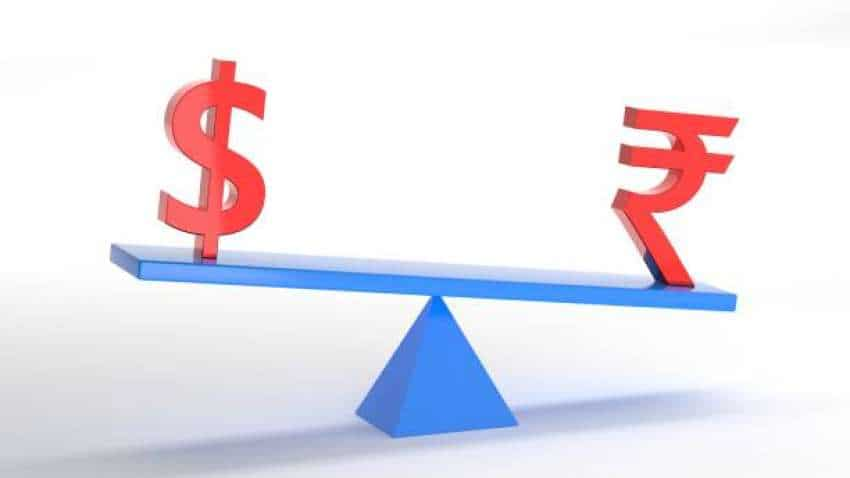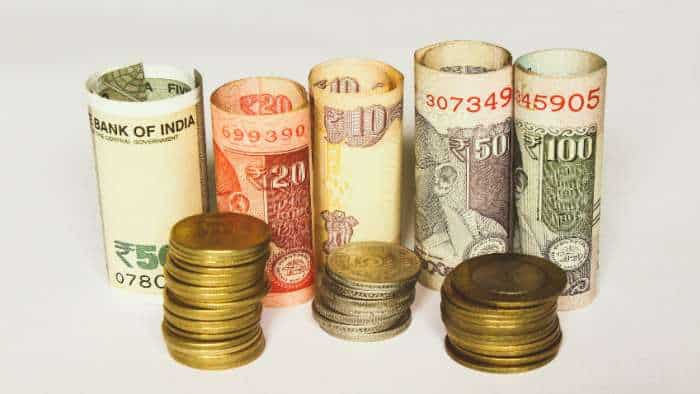Depreciating rupee: A mixed bag for industry – software companies gain, while other sectors bleed; know what experts say
Depreciating rupee: A mixed bag for industry – software companies gain, while other sectors bleed; know what experts say

The declining value of the rupee against the US dollar is turning out to be a mixed bag for the industry with some sectors bearing the brunt while others, especially software exporters, are hoping for continued gains.
The rupee, which has been depreciating against the greenback, is near the psychological barrier of 80 to a dollar and is likely to remain subdued with the Federal Reserve working overtime to contain inflation, which is at a historical high, in the US.
The biggest impact of the rupee depreciation will be on imported goods or goods using imported components, and the most-sought after item in this category is a mobile phone.
"Every percentage decline in rupee value impacts mobile phone supply chain by 0.6 per cent because of imports of components. The 5 per cent decline (in value of rupee) has an impact of 3 per cent on overall profitability, therefore, prices have to go up," said Pankaj Mohindroo, chairman, ICEA.
On the other hand, he added, "India's export ecosystem is benefiting."
"Imports would have gotten expensive to that extent but fortunately commodity prices have started easing," Mohindroo said.
As regards the impact of rupee depreciation on the software sector, Deepak Jotwani, Assistant Vice-President & Sector Head - Corporate Ratings, ICRA said, "Given that a sizable part of the revenue for the industry is USD denominated, depreciation of the INR against the USD has supported the industry revenue growth and margins to an extent historically."
If the recent weakness observed for the INR sustains over the next few quarters, he said, "INR depreciation is likely to add to the earnings of the industry in FY2023."
Sumit Pokharna, Vice President - Fundamental Research, Kotak Securities, opined that Indian IT companies face cross currency headwinds emanating from 5 per cent, 6.6 per cent, and 1.7 per cent appreciation of USD against EUR, GBP and AUD, respectively, in Q1FY23.
"Optically, rupee depreciation may appear as a headwind, however, cross-currency headwinds have ensured only a marginal tailwind for the quarter," Pokharna added.
On the impact on the steel sector, Alok Sahay, Secretary General, Indian Steel Association (ISA) said that while depreciating rupee vis-?-vis the US dollar would impact the domestic steel industry's input costs, "there might not be an immediate impact on the cost of domestic steel production as impact comes with a lag of two months or more depending on the inventory cycle maintained by steel producers".
He further said coking coal is one of the important key inputs in steel production apart from iron ore (available domestically) and any fall in the rupee would result in imported coal becoming more expensive.
Power sector experts are of the opinion that the rupee depreciation will push up the costs of imported components.
?This will increase our import bill in INR terms and further amplify the need to enhance the share of renewables in our power mix. Securing supply chains of minerals required in renewable electricity generation will help us avoid falling from dependence on Big Oil today to dependence on Big Shovel tomorrow.
"Such a proactive and comprehensive sourcing and processing will help us advantageously make our Energy in India and march towards vitally needed Energy Security?, said Pavan Choudary, Business Intellectual and Chairman of Blue Circle.
Director of Medical Technology Association of India (MTaI) Sanjay Bhutani said that the medical devices industry is already facing the brunt of several inflationary challenges due to severe cost escalation in freight charges as well as limited supply of raw materials.
"The devaluation of rupee has compounded the already challenging terrain for the industry and has increased the cost of essential medical device imports. While we appreciate the government's commitment to improving ease-of-doing-business, we hope that some leeway is provided to the industry to absorb these hits," Bhutani said.
As per the latest data, the country's imports expanded by 57.55 per cent to USD 66.31 billion in June compared to the year-ago month.
The merchandise trade deficit in June 2022 was estimated at USD 26.18 billion as against USD 9.60 billion in June 2021, which is an increase of 172.72 per cent.
With PTI Inputs
Get Latest Business News, Stock Market Updates and Videos; Check your tax outgo through Income Tax Calculator and save money through our Personal Finance coverage. Check Business Breaking News Live on Zee Business Twitter and Facebook. Subscribe on YouTube.
RECOMMENDED STORIES

Rs 55 lakh Home Loan vs Rs 55 lakh SIP investment: Which can be faster route to arrange money for Rs 61 lakh home? Know here

Sukanya Samriddhi Yojana vs PPF: Rs 1 lakh/year investment for 15 years; which can create larger corpus on maturity?
05:40 PM IST









 Rupee falls 3 paise to close at 83.96 against US dollar
Rupee falls 3 paise to close at 83.96 against US dollar Rupee vs Dollar: Indian currency falls 4 paise to close at all-time low of 82.34 against $
Rupee vs Dollar: Indian currency falls 4 paise to close at all-time low of 82.34 against $ Rupee vs Dollar: Indian currency rebounds 35 paise to 81.58 against $
Rupee vs Dollar: Indian currency rebounds 35 paise to 81.58 against $